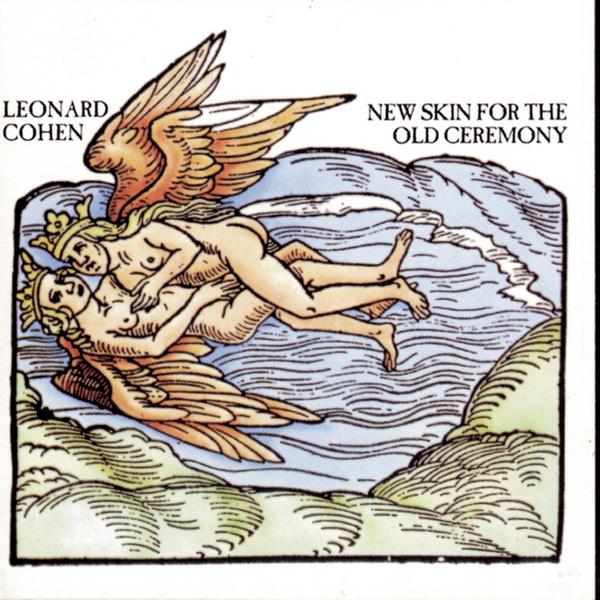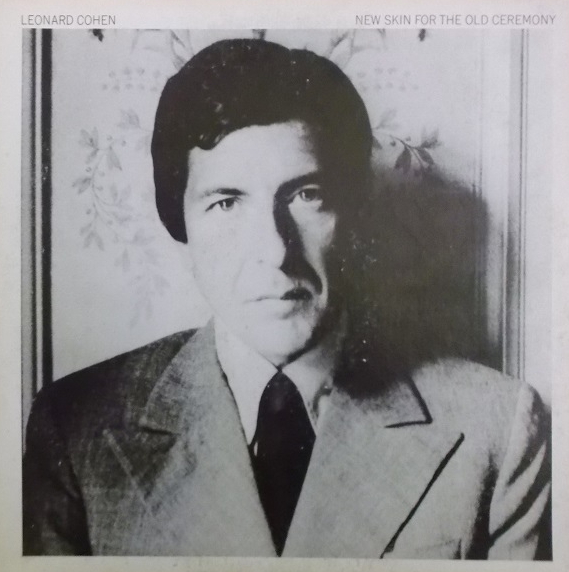
…I must say I’m pleased with the album. It’s good. I’m not ashamed of it and am ready to stand by it. Rather than think of it as a masterpiece, I prefer to look at it as a little gem.
~Leonard Cohen (to Melody Maker’s Harvey Kubernik in March 1975)That miraculously intimate voice has become more expressive and confident over the years without losing its beguiling flat amateurishness. Some of the new songs are less than memorable, but the settings, by John Lissauer, have the bizarre feel of John Simon’s “overproduction” on Cohen’s first album, which I always believed suited his studied vulgarity perfectly. A-
~Robert Christgau (robertchristgau.com).. The lyrics are filled with abstract yet vivid images, and the album primarily uses the metaphor of love and relationships as battlegrounds (“There Is a War,” “Field Commander Cohen”). Cohen is clearly singing from the heart, and he chronicles his relationship with Janis Joplin in “Chelsea Hotel No. 2.” This is one of his best album..
~Vik Lyengar (allmusic.com)
Chelsea Hotel #2
I remember you well in the Chelsea Hotel,
you were talking so brave and so sweet,
giving me head on the unmade bed,
while the limousines wait in the street.
Those were the reasons and that was New York,
we were running for the money and the flesh.
And that was called love for the workers in song
probably still is for those of them left.
Ah but you got away, didn’t you babe,
you just turned your back on the crowd,
you got away, I never once heard you say,
I need you, I don’t need you,
I need you, I don’t need you
and all of that jiving around.
Facts
Wikipedia:
| Released | August 11, 1974 |
|---|---|
| Recorded | February 1974, Sound Ideas Studio, New York |
| Genre | Folk rock |
| Length | 37:11 |
| Label | Columbia |
| Producer |
New Skin for the Old Ceremony is the fourth studio album by Leonard Cohen. On this album, he begins to evolve away from the rawer sound of his earlier albums, with violas, mandolins, banjos, guitars, percussion and other instruments giving the album a more orchestrated (but nevertheless spare) sound. The album is silver in the UK, but never entered the Billboard Top 200.

Background
For his fourth album, Cohen chose to work with John Lissauer, a recent college graduate and rising producer whose jazz background contrasted sharply with Bob Johnson, the Nashville-based producer who had been at the helm of Cohen’s two previous releases, 1969’s Songs From a Room and 1971’s Songs of Love and Hate. According to the Allan Reynolds 2010 book Leonard Cohen: A Remarkable Life, Cohen sat on Lissauer’s couch and played him his new songs on his guitar at the producer’s loft on 18th Street in New York, and eventually cut a handful of demos at a CBS studio before moving to Sound Ideas studio in February. Reynolds reports that Lissauer had the impression that the whole Nashville experience, including the 1972 European tour with “The Army” – the touring band that Johnson assembled – had been a bit overwhelming for Cohen: “It was like a big wave picking him up, and while he had fun it didn’t quite have the artistic sensibility that Leonard needed. The focus then had been on this Nashville energy thing.”
–
There is a war between the rich and poor,
a war between the man and the woman.
There is a war between the ones who say there is a war
and the ones who say there isn’t.
Why don’t you come on back to the war, that’s right, get in it,
why don’t you come on back to the war, it’s just beginning.
There Is a War
Artwork
The original cover art for New Skin for the Old Ceremony was an image from the alchemical text Rosarium philosophorum. The two winged and crowned beings in sexual embrace caused his U.S. record label, Columbia Records to print one early edition of the album minus the image substituting instead a photo of Cohen.

The image originally came to public attention in C.G.Jung‘s essay, The Psychology of The Transference (2nd ed.1966) where it is held by Jung to depict the union of psychic opposites in the consciousness of the enlightened saint. The sexual embrace as a symbol for this condition of psychic unity is also found frequently in Tibetan thangkas (sacred paintings).
I asked my father
I said, “Father, change my name”
The one I’m using now, it’s covered up
With fear and filth and cowardice and shameAh, but, lover, lover, lover, lover
Lover, lover, lover, come back to me
Yes and lover, lover, lover, lover
Lover, lover, lover, come back to me
Love Lover Lover
Track listing
All songs written by Leonard Cohen.
- Side one
- “Is This What You Wanted” – 4:13
- “Chelsea Hotel #2” – 3:06
- “Lover Lover Lover” – 3:19
- “Field Commander Cohen” – 3:59
- “Why Don’t You Try” – 3:50
- Side two
- “There Is a War” – 2:59
- “A Singer Must Die” – 3:17
- “I Tried to Leave You” – 2:40
- “Who by Fire” – 2:33
- “Take This Longing” – 4:06
- “Leaving Green Sleeves” – 2:38
Personnel
- Leonard Cohen – guitar, vocals, producer
- John Lissauer – woodwinds, keyboards, backup vocals, producer, arranger
- Emily Bindiger – backup vocals
- Gerald Chamberlain – trombones
- Erin Dickins – backup vocals
- Lewis Furey – viola
- Ralph Gibson – guitar
- Armen Halburian – percussion
- Janis Ian – vocals
- Gail Kantor – backup vocals
- Jeff Layton – banjo, mandolin, guitar, trumpet
- Barry Lazarowitz – percussion
- Roy Markowitz – drums
- John Miller – bass
- Don Payne – bass
YouTube playlist
–
Check out:
-Egil
